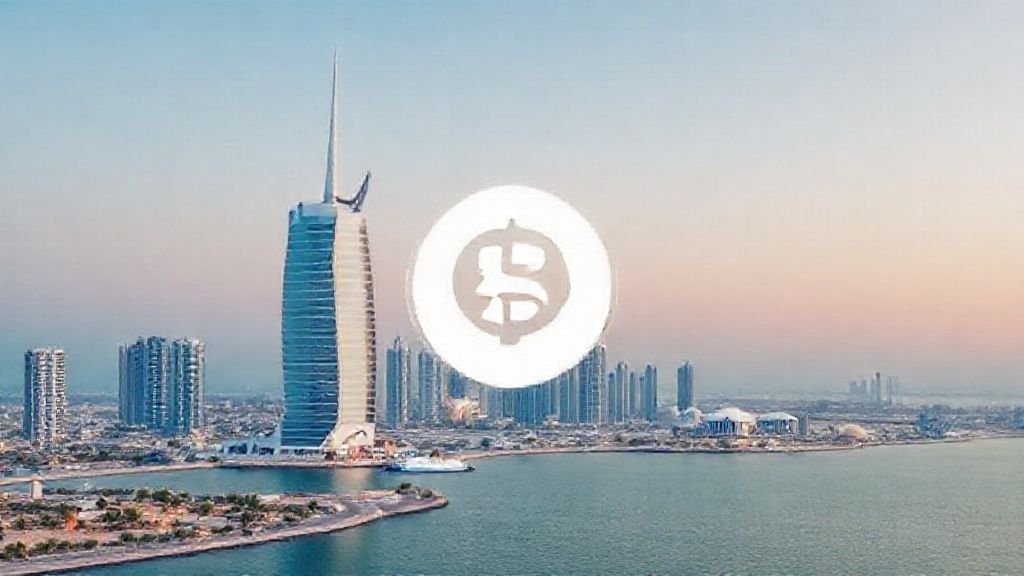Blog
The Top 10 Traffic Violations That Lead to Dubai Police Fines

Dubai’s commitment to maintaining road safety is evident through its stringent traffic rules and regulations designed to protect motorists and pedestrians. The city’s approach includes imposing traffic fines in Dubai to deter unsafe driving behaviors and demonstrating a firm stance on road safety. Consequences of violating Dubai these rules can range from fines and penalties to imprisonment or even deportation, emphasizing the importance of compliance while navigating the city’s roads. Dubai Police play a crucial role in enforcing these regulations, ensuring violators are promptly dealt with, which often involves imposing traffic fines in Dubai. They are notified of any infractions through SMS notifications, keeping the city’s streets safe for everyone.
Understanding the top traffic violationsUnderstanding the behaviors that lead to Dubai Police fines is essential for residents and visitors alike to avoid penalties and ensure a hassle-free driving experience in the city. This article delves into the ten most common infractions, including speeding, improper parking, and using mobile phones while driving. Additionally, it will guide readers on how to check for pending Dubai Police traffic fines, offering a comprehensive overview for anyone looking to navigate Dubai’s roads responsibly. Critical resources for this include:
- The acceptable check Dubai portal.
- The RTA website for checking RTA fines.
- The UAE has a satisfactory check service.
Speeding Violations
- Minor Speeding Violations (1-20 km/h over the speed limit):
- 1-20 km/h over AED 300 fine.
- 21-30 km/h over AED 500 fine.
- 31-40 km/h over AED 800 fine.
- 41-50 km/h over AED 1,000 fine.
- Moderate Speeding Violations (50-60 km/h over the speed limit):
- 50 km/h over AED 3,000 fine.
- 60 km/h over AED 1,500 fine, 12 black points, and vehicle impoundment for 30 days.
- Severe Speeding Violations (More than 60 km/h over the speed limit):
- 80 km/h over AED 3,000 fine, 23 black points, and possible vehicle and license confiscation for 60 days.
- Illegal street racing can attract fines of up to AED 100,000 enforced by the Dubai Police.
Parking Violations
- Parking on Pavements and Non-designated Areas:
- Parking illegally on pavements incurs a fine of AED 400.
- Similarly, parking your Vehicle in a non-designated area also attracts a penalty of AED 200.
- Repeated offenses, such as parking vehicles on pavements, result in the same Fine of AED 400, highlighting the importance of adhering to acceptable parking regulations to maintain order on Dubai’s roads.
- Obstructive and Inconsiderate Parking:
- Blocking traffic or access to private properties results in a fine of AED 200.
- Parking in a way that disturbs others is penalized with a fine of AED 500. This reinforces the city’s commitment to enforcing parking fines to ensure public convenience and safety.
- Overstaying the permitted parking duration not only inconveniences others but also results in a fine, which is AED 100. This measure is taken to encourage compliance with parking fines and maintain accessibility for all.
- Parking in Restricted Zones:
- Parking near a fire hydrant or on a pedestrian crossing is fined AED 400.
- Vehicles parked in spaces allocated for people of determination without a valid permit face a hefty fine, a clear indication of Dubai’s strict enforcement of parking fines to protect the rights of all citizens. AED 1,000 and accrue six black points.
- Unauthorized parking in a disabled bay incurs a fine of AED 500.
- Similarly, parking in front of a fire hydrant attracts a fine of AED 1,000 and 6 black points to the driver’s record.
These fines serve as a deterrent to ensure that parking regulations are adhered to, thereby maintaining order and accessibility on Dubai’s roads, with parking fines playing a crucial role in this enforcement.
Driving Under the Influence
- Zero Tolerance PolicyThe UAE enforces a strict zero-tolerance policy towards driving under the influence of alcohol, with a legal blood alcohol content (BAC) limit of 0.00%This means that any detectable amount of alcohol in a driver’s system can lead to severe penalties.
- Penalties for DUI:
- Fines: Offenders can face penalties ranging from AED 20,000 to AED 30,000.
- Imprisonment: Jail terms can vary, with some cases leading to up to six months of imprisonment.
- Vehicle Confiscation: Vehicles may be confiscated for periods typically around 60 days.
- License Suspension: Accumulating 23 black points can lead to the suspension of the driver’s License.
- Additional ConsequencesIn severe cases, such as causing an accident while under the influence, the penalties can escalate to longer jail terms and driving bans, impacting the driver’s future employment and immigration status.
- Legal and Testing Procedures:
- Arrest and TestingIf suspected of DUI, drivers are arrested and taken to a police station for further testing. Refusal to take a breathalyzer test leads to harsher penalties.
- Insurance Implications: It’s crucial to note that the driver’s insurance policy may not cover damages caused during a DUI offense the driver’s insurance policy may not cover.
The UAE’s stringent approach, influenced by Islamic Sharia law, underscores the seriousness with which it treats DUI offenses, applying equally to both Muslims and non-Muslims. However, non-Muslims may consume alcohol within licensed venues.
Using Mobile Phones While Driving
- Penalties for Mobile Phone Use While Driving:
- Using mobile phones without a hands-free system while driving is punishable by a fine of AED 800 and the addition of four black points to the driver’s License.
- Enforcement Technologies:
- Dubai Police utilize advanced technology to enforce this regulation. AI-powered cameras installed across the city can automatically detect when drivers use their mobile phones at critical traffic points such as junctions, turns, and crossings.
- Additionally, intelligent radars introduced in 2020 can detect mobile phone use and other infractions like illegal lane changes and failure to use seat belts.
- Impact of Mobile Phone Use on Road Safety:
- Between January and August 2023, mobile phone usage while driving was responsible for 99 accidents, resulting in six fatalities in Dubai.
- The police recorded 35,527 violations for mobile phone use while driving in the same period, underscoring the prevalence of this issue.
- Distraction due to mobile phone use is often cited as a common factor in most traffic incidents, alongside other serious causes such as not giving priority to other road users, sudden swerving, and failure to maintain a safe distance.
Not Wearing Seat Belts
- General Seat Belt Regulations in Dubai:
- All vehicle occupants must wear seat belts, including rear-seat passengers.
- The driver must ensure all passengers adhere to the seat belt laws.
- Children under four years old must be secured in child safety seats.
- Front seat passengers must be at least 145 cm tall and not under ten years old.
- Penalties for Non-Compliance:
- Failure to wear a seat belt while driving or as a passenger results in a fine of AED 400 and four black points on the driver’s License.
- Taxi drivers are also held accountable for ensuring all passengers are buckled up, facing the same penalties for non-compliance.
- During a targeted enforcement blitz over three days, Dubai Police fined 190 drivers for not wearing seat belts, highlighting the strict enforcement of this rule.
- Enforcement and Awareness Campaigns:
- The Dubai Police have implemented specific periods of leniency followed by strict enforcement to increase compliance with the seat belt law.
- Educational efforts include stopping drivers to advise them on the importance of seat belt usage before transitioning to issuing fines.
- Recent statistics show that 3,602 fines were issued for seat belt violations detected by cameras, and officers pulled over 1,333 drivers in a single enforcement period.
Driving Without a Valid License
- Penalties for Driving Without a Valid License:
- Driving without a valid license in Dubai can result in a fine of AED 5,000, three months of imprisonment, or both under Article 51 of Federal Law No. 21 of 1995.
- If caught driving with an expired or no license, offenders face a fine of AED 500, accrue four black points, and risk vehicle impoundment for seven days.
- Severe Legal Consequences:
- Utilizing a fake or illegal license can lead to a hefty fine of AED 50,000.
- Unauthorized use of a vehicle without the owner’s permission can attract penalties, including up to a year in jail or a fine of approximately AED 10,000 under Article 447 of Federal Decree-Law No. 31 of 2021.
- Regulations and Compliance:
- To avoid penalties, all drivers must ensure their Vehicle has valid number plates, meets environmental standards, and is in good driving condition. Ensuring your Vehicle displays a valid vehicle plate is part of this responsibility.
- Car lenders must verify that the borrower holds a valid UAE driving license to avoid legal issues such as accidents or reckless driving. Confirming the driver’s license number is a crucial step in this process.
- UAE residents must pass all required tests at authorized driving institutes to obtain a driving license, which can cost around 15,000 AED, depending on the chosen plan.
- Visitors and expats must convert their foreign licenses to UAE driving licenses within a stipulated period; driving with an expired international license is prohibited.
Vehicle Registration Violations
- Number Plate Violations:
- Driving without a number plate, this severe violation results in a hefty fine of AED 3,000, an accrual of 23 black points, and a 90-day vehicle impoundment period.
- Driving with only one or an unclear number plate: If a vehicle is found with only one number plate or if the vehicle plate is not visible, the Fine imposed is AED 400.
- Heavy Vehicle Compliance:
- Related ViolationsHeavy vehicles that do not comply with regulations face fines varying from AED 1,500 to AED 3,000. Depending on the severity of the violation, black points ranging from 4 to 12 can also be issued, along with vehicle confiscation for periods ranging from 30 to 90 days.
- General Vehicle Compliance:
- Regulatory RequirementsDrivers must ensure their vehicles are equipped with valid vehicle plates, adhere to environmental standards, and are in a condition fit for driving to avoid fines and penalties. This includes regular maintenance checks to ensure safety and compliance with Dubai’s stringent traffic regulations.
Reckless Driving and Endangering Lives
- Reckless Driving Penalties:
- Driving in a manner that endangers personal or public safety incurs severe penalties, including a fine of AED 3,000, 23 black points, and vehicle impoundment for 60 days.
- Reckless driving that results in severe injury or endangers lives can lead to court-determined fines and a mandatory two-month vehicle impoundment.
- Unauthorized racing or behavior that risks harm to other vehicles, individuals, or road infrastructure can attract fines of up to AED 100,000.
- Intentionally colliding with a police vehicle triggers a fine of AED 100,000 and vehicle impoundment.
- Specific Actions and Corresponding Penalties:
- Blocking other vehicles’ paths results in a fine of AED 1,000 and 4 black points.
- Non-judicious use of the horn is penalized with a fine of AED 400 and 4 black points.
- Failing to use lights at night or during poor weather conditions, such as fog, leads to a fine of AED 500 and 4 black points.
- Driving with malfunctioning vehicle lights incurs a fine of AED 400 and 6 black points.
- Operating a noisy vehicle results in a fine of AED 2,000 and 12 black points.
- Sudden swerving attracts a fine of AED 1,000 and 4 black points.
- Reversing dangerously is punishable by a fine of AED 500 and 4 black points.
- Incorrect turning maneuvers or turning from undesignated areas result in a fine of AED 500 and 4 black points.
- General Compliance and Enforcement:
- The black point system in Dubai penalizes traffic violations with up to 24 points, depending on the severity of the offense.
- Fines for traffic violations can range from AED 300 for minor offenses to AED 100,000 for significant violations.
- Vehicle owners must ensure that anyone borrowing their Vehicle has a valid UAE driver’s License to avoid penalties for accidents or reckless driving.
- The overarching goal of these stringent measures is to reduce traffic-related fatalities, aiming to lower the mortality rate from the current figures of 6.1 deaths per 100,000 to 3 deaths per 100,000.
Red Light Violations
- Standard Penalties for Red Light Violations:
- Jumping a red light in Dubai results in a fine of AED 1,000, accrual of 12 black points on the driver’s License, and vehicle impoundment for 30 days.
- Repeated offensesAccumulating violations within a year can lead to doubled fines and impoundment times, reflecting the severity of the breach.
- Impact on Road Safety:
- Running red lights is a significant cause of accidents, contributing to 51 accidents over seven months, resulting in two fatalities and 73 injuries, including severe and minor injuries.
- In 2022 alone, an average of 90 drivers per day were caught committing this violation, highlighting its prevalence.
- Between 2019 and 2022, red light violations led to 23 deaths and 348 traffic accidents, emphasizing the critical need for adherence to traffic signals.
- Dubai Police Enforcement and Penalties:
- The Dubai Police enforce strict penalties for red light violations, including a hefty fine of AED 1,000 for traffic fines in Dubai, as part of their commitment to maintaining road safety. AED 50,000 for certain severe infractions, 30-day vehicle confiscation, and 23 black points on the driver’s License.
- As of July 6, 2023, new regulations have increased the fines for jumping red lights to AED 1,000, highlighting the emphasis on traffic fines in Dubai.Dhs50,000, underscoring the government’s commitment to road safety.
- In response to these violations, 855 vehicles were impounded, and 13,876 violations were issued. The Dubai Police issued numerous fines for running red lights over seven months, demonstrating the strict enforcement measures in place.
How to check Dubai police Fines
Residents and visitors can utilize several convenient methods to efficiently manage and check for traffic fines in Dubai, including the fine inquiry service offered by the Dubai Police. This Dubai Police exemplary inquiry system is designed to streamline the process, making it easier for everyone to stay on top of their obligations.
Online Platforms
- Visit the Dubai Police website and navigate to ‘Services’ and ‘Traffic Services.’
- Choose ‘Fines Inquiry and Payment’.
- You can search fines using Dubai TC#s, License No., Vehicle No., or Fine No.
- Required details for an acceptable inquiry include the source of the Fine (e.g., Abu Dhabi, Dubai) and additional information depending on the inquiry type, such as License No. Or Plate Details. This ensures a smooth and efficient delicate inquiry process.
- Roads and Transport Authority (RTA) Website:
- Log on to the RTA website and select the option for individuals, companies, or trusted agents.
- Navigate to ‘Pay Dubai Traffic Fines’.
- To pay fines, you’ll need the traffic file number, the license holder’s date of birth, and a valid GCC credit or debit card, including Mastercard, among other payment methods. This variety of options makes the payment process accessible and convenient.
- Follow these steps: Search your fines, review your results, confirm, and pay.
Mobile Apps and SMS Services
- Mobile Apps Both Dubai Police and RTA offer mobile applications known as the Dubai Police application. These applications are available for download and allow users to check and pay their fines directly. This digital solution enhances user convenience, allowing them to manage fines effortlessly.
- SMS Service: For a quick check, send an SMS to the specified number provided by Dubai Police with relevant details to receive delicate information. This SMS service is another user-friendly option for individuals to stay informed about their fines.
Payment Options and Discounts
- Easy Payment PlansTraffic fines can be paid through a 0% interest easy payment plan available for credit card holders at selected banks, highlighting flexible payment methods. This initiative provides financial relief to those managing their fines.
- Discounts: Effective April 1, 2023, a 35% discount is offered if fines are settled within 60 days from the date of the violation, underlining the benefits of timely acceptable Payment. This incentive encourages drivers to clear their fines promptly.
Additional Information
- Black Points System: Be aware of the accumulated black points as accumulating 24 pointsAccumulating violations within a year can result in a license suspension for 3 to 6 months and necessitates a rehabilitation course, emphasizing the importance of maintaining a clean driving license. This measure aims to promote responsible driving behavior.
- Service TermsOnline payments are accepted from UAE and GCC countries only. Credit and Debit Cards issued outside these regions are not applicable for online payments, reflecting specific payment methods. This ensures a secure and region-specific payment gateway.
These multiple platforms and services provided by Dubai Police and RTA ensure that managing and paying traffic fines is accessible and convenient. Through efficient traffic services and fine payment options, these platforms help maintain compliance with traffic laws and regulations. Integrating traffic services into these platforms exemplifies Dubai’s commitment to leveraging technology for public convenience.
FAQs
1. How can I check for any traffic fines in Dubai?
The official RTA website is your go-to resource for checking for traffic fines in Dubai to check for traffic fines in Dubai. By utilizing the ‘RTA fine check’ feature, you can easily navigate a Dubai fines check process. This user-friendly platform is designed to facilitate residents and visitors in conducting an OK check in Dubai, ensuring they can quickly access information on RTA fines, Dubai fines, and even broader UAE-acceptable checks, making it a comprehensive RTA delicate inquiry and traffic fine inquiry tool.www.rta.aeOnce on the site, click on the ‘Check Your Fines’ tab prominently displayed on the homepage for a thorough traffic acceptable inquiry. You’ll be prompted to enter your ‘Traffic File Number’ and other required details. Following this, the site will reveal any fines registered to your name, complete with specifics such as the violation type, the date it occurred, and the amount due.
2. What should I do to contest a traffic fine in Dubai?
If you wish to contest a traffic fine in Dubai, you can file a complaint in person at the General Directorate of Traffic headquarters in Al Barsha. Additionally, any police station in Dubai can assist with fine disputes, making them key resources for those looking to address their concerns. For those preferring to make their case over the phone, the number +971-4-606-3555 is available for such inquiries.
3. Is there a way to get a discount on traffic fines in Dubai?
Yes, there are discounts available to settle traffic fines in Dubai. From April 1, 2023, motorists can benefit from a 35 percent discount if they clear their traffic fine within 60 days of the violation. A 25 percent discount is also offered for fines settled after 60 days but within a year from the violation date. This initiative encourages timely payments while providing some financial relief.
4. How can I avoid incurring traffic fines while driving in Dubai?
To avoid traffic fines in Dubai, it’s essential to adhere to speed limits and remain vigilant of varying speed zones, particularly in residential areas and near schools. Keeping within legal speed limits is a matter of compliance and a critical measure for minimizing accident risks and avoiding fines. Regular traffic fines inquiries can also help you stay informed about new regulations or speed zone changes.
Blog
Looking for a GCS Crypto Currency Licence and Registration in Dubai?

Looking for a GCS Crypto Currency Licence and Registration in Dubai?
Welcome to our guide on Crypto currency license in Dubai. At GCS, we specialize in providing top-quality Crypto currency license services to meet your needs.
Why Choose Our Crypto currency license Services?
Our team of experienced professionals understands the importance of quality Crypto currency license in Dubai. We pride ourselves on delivering exceptional results and customer satisfaction.
Our Approach to Crypto currency license
We take a comprehensive approach to Crypto currency license, ensuring that every aspect of our service meets the highest standards. Our process includes:
- Thorough consultation to understand your specific needs
- Customized solutions tailored to your situation
- Ongoing support throughout the process
- Transparent communication at every step
Important Resources
For more information about Crypto currency license, check out these valuable resources:
- Crypto Currency Licence in Dubai
- Dubai Crypto Currency Licence
- Crypto Currency Registration in Dubai
- Dubai Crypto Currency Registration
- GCS Crypto Currency Licence in Dubai
Get Started Today
Ready to experience the difference our Crypto currency license services can make? Contact GCS today to schedule your consultation. Our team is standing by to answer your questions and help you get started on the path to success.
Don’t wait – reach out to us today and discover why so many people in Dubai trust GCS for their Crypto currency license needs.
Blog
Best Crypto currency license Services in Dubai

Best Crypto currency license Services in Dubai
Welcome to our guide on Crypto currency license in Dubai. At GCS, we specialize in providing top-quality Crypto currency license services to meet your needs.
Why Choose Our Crypto currency license Services?
Our team of experienced professionals understands the importance of quality Crypto currency license in Dubai. We pride ourselves on delivering exceptional results and customer satisfaction.
Our Approach to Crypto currency license
We take a comprehensive approach to Crypto currency license, ensuring that every aspect of our service meets the highest standards. Our process includes:
- Thorough consultation to understand your specific needs
- Customized solutions tailored to your situation
- Ongoing support throughout the process
- Transparent communication at every step
Important Resources
For more information about Crypto currency license, check out these valuable resources:
- Crypto Currency Licence in Dubai
- Dubai Crypto Currency Licence
- Crypto Currency Registration in Dubai
- Dubai Crypto Currency Registration
- GCS Crypto Currency Licence in Dubai
Get Started Today
Ready to experience the difference our Crypto currency license services can make? Contact GCS today to schedule your consultation. Our team is standing by to answer your questions and help you get started on the path to success.
Don’t wait – reach out to us today and discover why so many people in Dubai trust GCS for their Crypto currency license needs.
Blog
Dubai 2025: The Tech Revolution Unveiled – From Smart Cities to AI‑Driven Innovation
Dubai has always been a city that looks toward the future. From its iconic skyline to its ambitious plans for sustainability, the spirit of innovation is woven into every project. In 2025, the city is stepping into a new era where technology is not just a tool but a living system that powers everyday life, reshaping how residents work, travel, shop and connect.
1. The Birth of a Smart City
When most people think of a smart city, images of connected traffic lights, billboards that update in real time, and drones delivering packages come to mind. Dubai’s journey began with the Smart Dubai programme, which set out to create a city where digital services are delivered more efficiently and transparently. The programme’s core goals were:
- Digital identity for citizens and residents.
- Integrated data platform for city services.
- Smart infrastructure that adapts to real‑time needs.
- Encouragement of start‑ups and tech investment.
These pillars laid the groundwork for a city that can react to the needs of its people instantly, making daily life smoother and more rewarding. This foundation also helped launch a wave of projects that pushed Dubai ahead of the global curve.
2. Artificial Intelligence Takes the Driver’s Seat
Artificial Intelligence (AI) has become the engine behind many of Dubai’s newest achievements. From predictive policing that helps keep streets safe to AI‑powered logistics that reduce delivery times, the technology is changing every sector.
Transportation and Mobility
The Dubai Metro’s robots now run maintenance checks without human intervention. Autonomous buses navigate the sidewalks, delivering passengers between business districts with minimal delays.
Healthcare Revolution
AI algorithms predict potential health risks based on lifestyle and genetic data, allowing doctors to intervene early. Virtual consultations powered by AI chatbots provide instant medical advice, freeing up specialists for complex cases.
Public Safety and Law Enforcement
Machine‑learning models detect unusual crowd movements and highlight potential security threats before they grow. Law‑enforcement drones patrol the city, ensuring that emergency response is swift and efficient.
By embedding AI into everyday services, Dubai turns its metropolis into a responsive organism that learns and grows with its people.
3. Blockchain: The Invisible Ledger of Modern Life
While blockchain has made headlines in finance, its real power lies in its transparency and security. Dubai has leveraged the technology to create tamper‑proof systems across government, healthcare, and logistics.
One notable example is the Digital Health Pass—an immutable record that tracks vaccination, medical history, and health alerts. Similarly, property transactions are recorded on a blockchain, cutting down paperwork and fraud while speeding up closing times.
These applications not only add value for the government but also provide a sense of trust for residents and investors alike.
4. The Architecture of Tomorrow: Smart Skyscrapers and Infrastructure
Dubai’s skyline is home to more than just office space; it is a living laboratory for sustainable design. Buildings now incorporate:
- Energy Harvesting Windows: Transparent solar panels that provide electricity to the building’s systems.
- Responsive Facades: Skin that adjusts to sunlight and temperature, keeping interiors comfortable while lowering energy usage.
- Water Recycling Systems: On‑site purification that reduces municipal water demand.
These features not only reduce carbon footprints but also lower operational costs, making high‑rise living accessible to a wider audience.
5. Technology Hubs and the Start‑up Ecosystem
The city’s growth is driven partly by its vibrant ecosystem for technology start‑ups. Numerous incubators provide mentorship, financing, and access to venture capital. Key areas of focus include:
- FinTech solutions simplifying banking for the cloud‑native generation.
- EdTech platforms that bring personalized learning to anyone on the move.
- HealthTech that integrates wearable data with AI diagnostics.
- Supply chain technology creating end‑to‑end traceability.
Dubai’s open data initiatives give start‑ups a wealth of information—making it easier to test and scale products that fit the local market and can also export worldwide.
6. The Human Touch: Building Tech Culture
Innovation is only as good as the people behind it. Dubai invests heavily in human capital: from schools teaching coding from kindergarten to higher‑education programmes that put AI and blockchain at the forefront.
Workshops lead residents to create their own mini‑projects, giving them a sense of ownership over the urban digital narrative. These efforts foster a public appetite for technology, ensuring that the next wave of ideas will come from diverse voices.
7. Looking Ahead: What Lies Beyond 2025?
The ambition never stops. While 2025 has delivered massive strides, the sights are now set on a more interconnected yet sustainable system.
- Zero‑carbon buildings enabled by nanomaterials.
- Hyper‑fast transport links into the desert, turning islands into bustling hubs.
- Advanced AI that helps residents live healthier lifestyles by predicting needs.
- Fully autonomous commercial districts where order and efficiency thrive.
These future projects are based on data collected in real time, meaning the city can adapt quickly to changing aspirations.
Dubai’s transformation demonstrates how creating a digital ecosystem, backed by supportive policy, can accelerate progress for all residents and set a global example for future city planning.
Want to read more about how Dubai is turning skyscrapers into AI hubs? Explore our story on skyscraper AI transformation.
Curious how the city’s smart system uses AI and blockchain to improve everyday life? Dive into the pulse of Dubai’s tech evolution.
Still wondering how visionary dreams turned into a reality of smart cities and AI? Discover the journey of Dubai’s tech pulse.
-

 Business2 years ago
Business2 years agoTop 10 Highest-Paying Jobs in Dubai for 2024-25
-

 Business2 years ago
Business2 years agoTop 10 Business Opportunities in Dubai for 2024-2025
-

 Business2 years ago
Business2 years agoBest upcoming exhibitions and trade shows in Dubai, 2024
-

 Business1 year ago
Business1 year agoHow Much Does It Cost to Open a Company in Dubai in 2024?
-

 Sports2 years ago
Sports2 years agoTop 5 Upcoming International Sporting Events in Dubai (2024-2025)
-

 Blog2 years ago
Blog2 years agoPlaces to Visit in Ras Al Khaimah
-

 Business2 years ago
Business2 years agoTop 5 Networking Events for Businesses in Dubai in 2024
-

 Entertainment2 years ago
Entertainment2 years agoTop 10 Must-See Shows in Dubai: From Broadway Musicals to Acrobatic Spectacles





